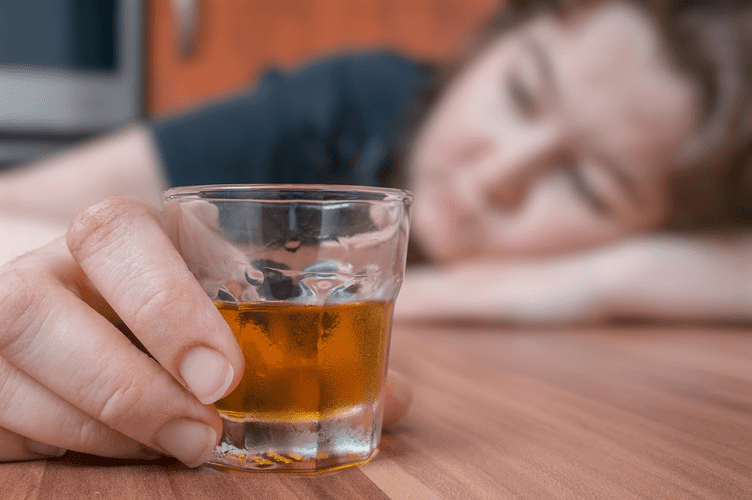Individuals with co-occurring AUD and psychiatric disorders tend to return to alcohol more frequently and experience more severe psychiatric symptoms. The likelihood of recovery from both conditions is higher if both the AUD and the co-occurring mental health disorder are treated. Patients with less severe AUD and mental health conditions may receive treatment in primary care, while those with more severe conditions may require care from a mental health or addiction specialist. With regard to the studies included in this review, the majority of studies used large sample sizes representative of the general population and standardized criteria to assess alcohol use and CMD, particularly those reporting the prevalence of AUD. First, the majority of studies focused upon the prevalence of alcohol use among those with and without types of CMDs, namely MDD, rather than other disorders such as SAD. Therefore, we were unable to explore associations beyond broad mood and anxiety/phobic disorders, including more specific disorders.
Personality disorders
The American Medical Association (AMA) first identified alcoholism as a disease in 1956. The categorization of alcoholism has changed over time, and the condition is now recognised as a mental health issue. This facilitates more empathetic and effective treatment, including therapy and group support. Recognising the connections between AUD and mental health is crucial for effective recovery.
- Inpatient or outpatient rehab can help people establish their sobriety, while also beginning to treat other co-occurring mental health problems at the same time.
- While many adults can moderately consume alcohol without significant consequences, the risk of developing AUD depends on how much, how often, and how quickly a person drinks.
- But these may be easier for concerned family members and friends to ask, since they may hesitate to ask direct questions about quantity.
- During your first appointment, you can get clarification on your diagnosis as well as your treatment options.
- The pooled proportions were then converted to an odds ratio (OR) using the metan command with the DerSimonian & Laird mode in Stata version 16 39.
How do mental illnesses (namely depression) and alcoholism play into each other?
Small gestures from loved ones, such as regular check-ins or quiet encouragement, can help maintain recovery efforts. The quality of support matters most, with empathy and understanding being shown to make a lasting difference. Strengthening supportive relationships during and after treatment can help promote long-term recovery outcomes in people who are in recovery 8. Alcohol misuse can also bring serious risks, including emotional or physical harm, especially in relationships where tempers and control become issues.
- For example, individuals with AUD are three times more likely to experience major depressive disorder (MDD).
- However, in around a third of alcohol-dependent people, depression persists even after alcohol abuse treatment and long periods of abstinence, suggesting that it pre-dates or exists separately from alcohol abuse.
- A 2020 review found that 12-step groups could even be more effective at increasing abstinence rates than other forms of treatment.
- To date, there has not been a systematic review or meta‐analysis reporting the prevalence of other types of alcohol use, such as binge drinking, among those with and without a CMD in the adult general population, and by specific CMD diagnoses.
- As individuals consume alcohol more frequently, they develop a tolerance to its effects, leading to physical and psychological dependence.
About the Reviewer
But in 1956, the AMA officially designated alcoholism as a disease, meaning people should be hospitalized and treated for the condition. The AMA emphasized that in the case of alcoholism (as opposed to intoxication), the person did not have control over their alcohol use. It is important to give any treatment plan a chance to work before deciding whether it is right for you. Explore key milestones, discoveries, and the impact of NIMH-funded studies on mental health. The Division of Intramural Research Programs (IRP) is the internal research division of the NIMH. Over 40 research groups conduct basic neuroscience research and clinical investigations of mental illnesses, brain function, and behavior at the NIH campus in Bethesda, Maryland.

Bipolar disorder and AUD
- First, we discuss evidence on the prevalence of psychiatric disorders in people with alcohol use disorder, and the prevalence of alcohol use disorder in people with psychiatric disorders.
- However, the withdrawal process itself can be challenging and even life-threatening, with potential symptoms such as delirium tremens (DT), seizures, and hallucinations.
- With early action, the proper care, and a strong support network, people can regain control over their lives and move forward with lasting stability.
- But in 1956, the AMA officially designated alcoholism as a disease, meaning people should be hospitalized and treated for the condition.
- In addition to being a diagnosable mental health condition, AUD is also a medical disease.
As a service to our readers, Harvard Health Publishing provides access to our library of archived content. A doctor may order additional tests to find out whether alcohol-related damage to the liver, stomach or other organs has occurred. A person with PTSD may develop AUD as a result of using alcohol to try to cope with or numb traumatic memories. The prevalence of co-occurring AUD and PTSD is 15% to 30% overall and 50% to 60% among veterans and military personnel.
Treatment can be outpatient and/or inpatient and be provided by specialty programs, therapists, and health care providers. In short, the need for addictive substances becomes hardwired in the brain, to the point that the brain can’t distinguish between healthy rewards and drug rewards. In a comprehensive review, Fischer (1990) found that between 3.6 and 26 percent of homeless adults suffered from both a mental disorder Sober living home and AUD. The rates of co-occurring mental and AOD-use disorders ranged from 8 to 31 percent.
It is very important to get treatment for such disorders if they are contributing to the problem. The larger part of AUD treatment involves mental health and emotional support, including therapy and group support. Combining medications and behavioural healthcare for AUD and co-occurring psychiatric disorders often produces superior outcomes than using either treatment alone. AUD is a chronic, relapsing brain condition, meaning there is no cure, and despite the length of time in recovery, there is always the chance of a relapse.

The structure of comorbidity itself remains an active area of research.49 Classification systems categorise disorders as either present or absent, on the basis of a set of diagnostic criteria, and assume that boundaries are stable across diagnoses. Several procedures could improve the detection of AOD-use disorders and of potentially harmful AOD use among psychiatric patients. For example, mental health clinicians should be educated about AOD’s and, subsequently, should maintain both a high index of suspicion for AOD-use disorders and an awareness of their clinical correlates. Little evidence exists indicating that psychiatric patients can sustain moderate AOD use over long periods of time without incurring problems (Drake et al. 1996a), although AOD use without abuse may occur at any time (Lehman et al. 1996).
Such models suggest that alcohol may be used to cope with symptoms of poor mental health, and used specifically due to its rapid onset of action 21. This might be the case among those with a CMD, as drinking alcohol may is alcohol use disorder a mental illness be perceived to alleviate symptoms of a disorder 21. People with common mental disorders (depression, anxiety, phobia) are twice as likely to report an alcohol use disorder than people without common mental disorders.
For example, individuals with AUD are three times more likely to experience major depressive disorder (MDD). Comprehensive care that addresses both the addiction and any co-occurring mental health issues is often the most successful approach. The likelihood of recovery from both AUD and a co-occurring mental health disorder is higher if both conditions are treated. People with this condition can’t stop drinking, even if their alcohol use upends their lives and the lives of those around them.
This is why social support plays a central role in treatment engagement and long-term recovery, and it’s most effective when it’s consistent, nonjudgmental, and focused on emotional encouragement rather than control. Peer support through recovery groups helps reduce feelings of isolation by offering shared experiences and accountability. Even in the absence of addiction, people are six times more likely to commit suicide when drunk than sober.10 Because alcohol reduces inhibitions, impairs decision-making, and causes people to become more impulsive, being under the influence http://www.berilinsaat.com/2023/08/28/alcoholic-neuropathy-causes-symptoms-treatment-2/ increases the chances of attempting suicide. Even if a person does not develop an addiction, excessive drinking can still impact the brain. During acute alcohol intoxication, the brain is flooded with positive neurotransmitters, particularly GABA and dopamine. GABA, the brain’s main inhibitory transmitter, produces a feeling of calmness, augmented by the simultaneous suppression of the excitatory transmitter glutamate.
Alcohol use disorder has many adverse effects on a person’s body, brain, and mental health. It can be difficult (and sometimes even dangerous) for people who are dependent on alcohol to stop drinking on their own, which is why many opt for treatment. Inpatient or outpatient rehab can help people establish their sobriety, while also beginning to treat other co-occurring mental health problems at the same time. Using a combined integrated approach, it’s often possible to safely detox from alcohol and stabilize in an inpatient treatment center before transitioning to outpatient care. Many of these people may have begun drinking to ease their symptoms of depression and get caught in a vicious cycle of hangover blues and self-medication. Regardless of which condition came first, it’s still possible to get treatment for alcohol use disorder and depression at the same time.
